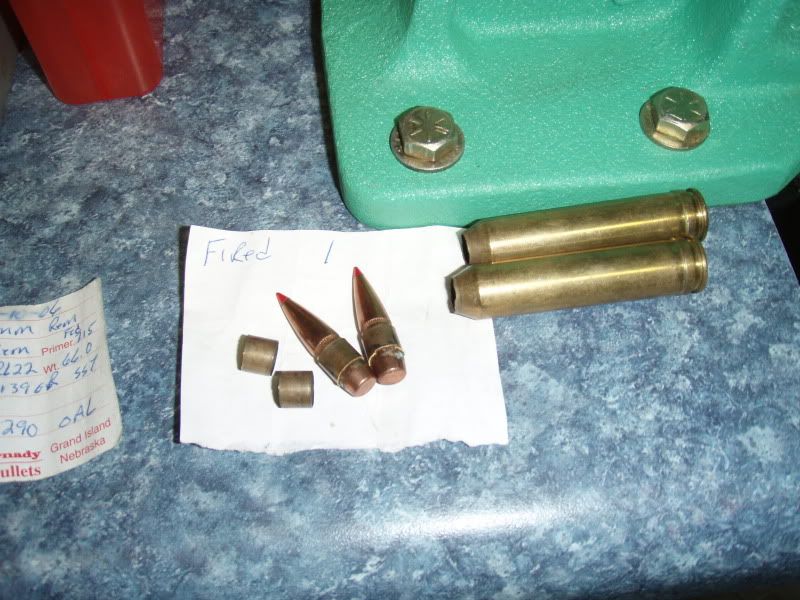truck driver
Ammo Smith
- Mar 11, 2013
- 7,302
- 841
I read here where some one was getting .002" of neck tension and thought that it was enough. I don't know what cartridge it was but I have been wondering if I was having tension problems with my 35 Whelen AI for a while now and had thought about getting a Factory Crimp die made. I have never read how to measure neck tension so I don't really know how much tension my cases have after resizing them. I was annealing ever 5 loadings and have just recently annealed after each firing.
My Reading full length sizing dies have a long tapered expander button which Reading claims is the best type to use.
So when prepping some cases today I decided to measure the inside diameter of some case mouths to seem how much the necks of the cases were sized.
The inside diameter of my Nosler cases freshly annealed and sized was .354", the inside diameter of a fired case was .364" so the dies are sizing the necks down .010". I also sized some once fired after annealing and the inside diameter was the same .354". I measured some 200gr .358 cal ABs and came up with .357" and some Hornady 200gr .358 cal bullets and came up with .3575".
If I'm thinking right by subtracting the inside neck diameter from the bullet diameter I should get the neck tension. .357"-.354"= .003" .3575"-.354"= .0035" so respectively I should have a neck tension of .003" when loading ABs and .0035" when loading Hornady bullets?
My Reading full length sizing dies have a long tapered expander button which Reading claims is the best type to use.
So when prepping some cases today I decided to measure the inside diameter of some case mouths to seem how much the necks of the cases were sized.
The inside diameter of my Nosler cases freshly annealed and sized was .354", the inside diameter of a fired case was .364" so the dies are sizing the necks down .010". I also sized some once fired after annealing and the inside diameter was the same .354". I measured some 200gr .358 cal ABs and came up with .357" and some Hornady 200gr .358 cal bullets and came up with .3575".
If I'm thinking right by subtracting the inside neck diameter from the bullet diameter I should get the neck tension. .357"-.354"= .003" .3575"-.354"= .0035" so respectively I should have a neck tension of .003" when loading ABs and .0035" when loading Hornady bullets?





